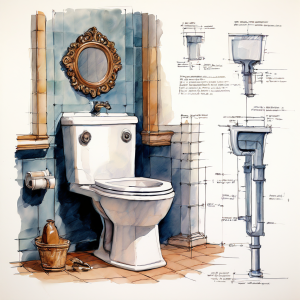In today’s service-oriented society, understanding the nuances of tipping etiquette can be as complex as a labyrinth. Navigating through this maze of manners and gratitude, one often wonders about the appropriate ways to show appreciation for various services. From your daily barista to the occasional contractor, the rules of tipping can vary widely. In this comprehensive guide, we aim to unravel these mysteries, guiding you through the ins and outs of tipping practices for different service professionals.
Understanding Tipping Etiquette
The Basics of Tipping: A Common Courtesy
Tipping is more than just a monetary gesture; it’s a token of appreciation for a job well done. It signifies acknowledgment and gratitude towards someone who has provided a service that meets or exceeds expectations. However, it’s not just about the amount; it’s about the gesture and what it represents.
Service Industry Standards
In the service industry, certain professionals are traditionally expected to receive tips. These include waiters, bartenders, taxi drivers, and hairdressers, among others. The standard tipping rate for these services typically ranges from 15% to 20% of the total bill, reflecting the quality of service received.
When to Tip: Navigating Various Services
Food and Beverage Service
In restaurants and bars, tipping is almost universal. Here, tips form a significant part of the workers’ income. For exceptional service, going beyond the standard 20% is a kind gesture.
Hospitality and Accommodation
For hotel staff such as bellhops and housekeepers, tipping is a common practice. A few dollars per day for housekeeping and a similar amount for each piece of luggage handled by a bellhop is customary.
Personal Services
When it comes to personal services like haircuts or spa treatments, a tip of 15%-20% is standard. This shows appreciation for the individual’s skill and attention to detail.
Special Considerations in Tipping
Uncommon Service Scenarios
Not all service encounters are straightforward. In some cases, such as when dealing with contractors or specialized service providers, the tipping norms are not as clear-cut.
Appreciating Extraordinary Efforts
When a service provider goes above and beyond, showing extra appreciation is appropriate. This could be in response to emergency services, exceptional craftsmanship, or simply a display of outstanding professionalism.
The Locksmith Conundrum
Locksmiths fall into a unique category of service providers. They often come to our aid in stressful situations, such as being locked out of our homes or cars. While there is no hard and fast rule, considering a tip for a locksmith is a thoughtful gesture, especially if they provide quick, efficient, and friendly service. To understand more about this, a useful resource can be found here: do you tip a locksmith.
The Art of Tipping: Practical Tips
Assessing the Service Quality
Before deciding on the tip amount, consider the level of service provided. Was it efficient, friendly, and professional? Did the service provider go out of their way to ensure satisfaction?
Considering the Context
The context of the service also plays a role. Emergency services or help during off-hours might warrant a higher tip due to the inconvenience or additional effort involved.
Being Prepared
Carrying small denominations of cash can be handy for tipping, especially in situations where adding a tip to a credit card transaction isn’t an option.
Making Sense of Tipping: Final Thoughts
Tipping, while not mandatory, is a significant aspect of our daily interactions with service providers. It’s a small gesture that can make a big difference in someone’s day. Understanding and practicing proper tipping etiquette not only reflects your appreciation for the service provided but also contributes to a culture of gratitude and respect. Remember, when in doubt, a small token of appreciation is always better than none.



